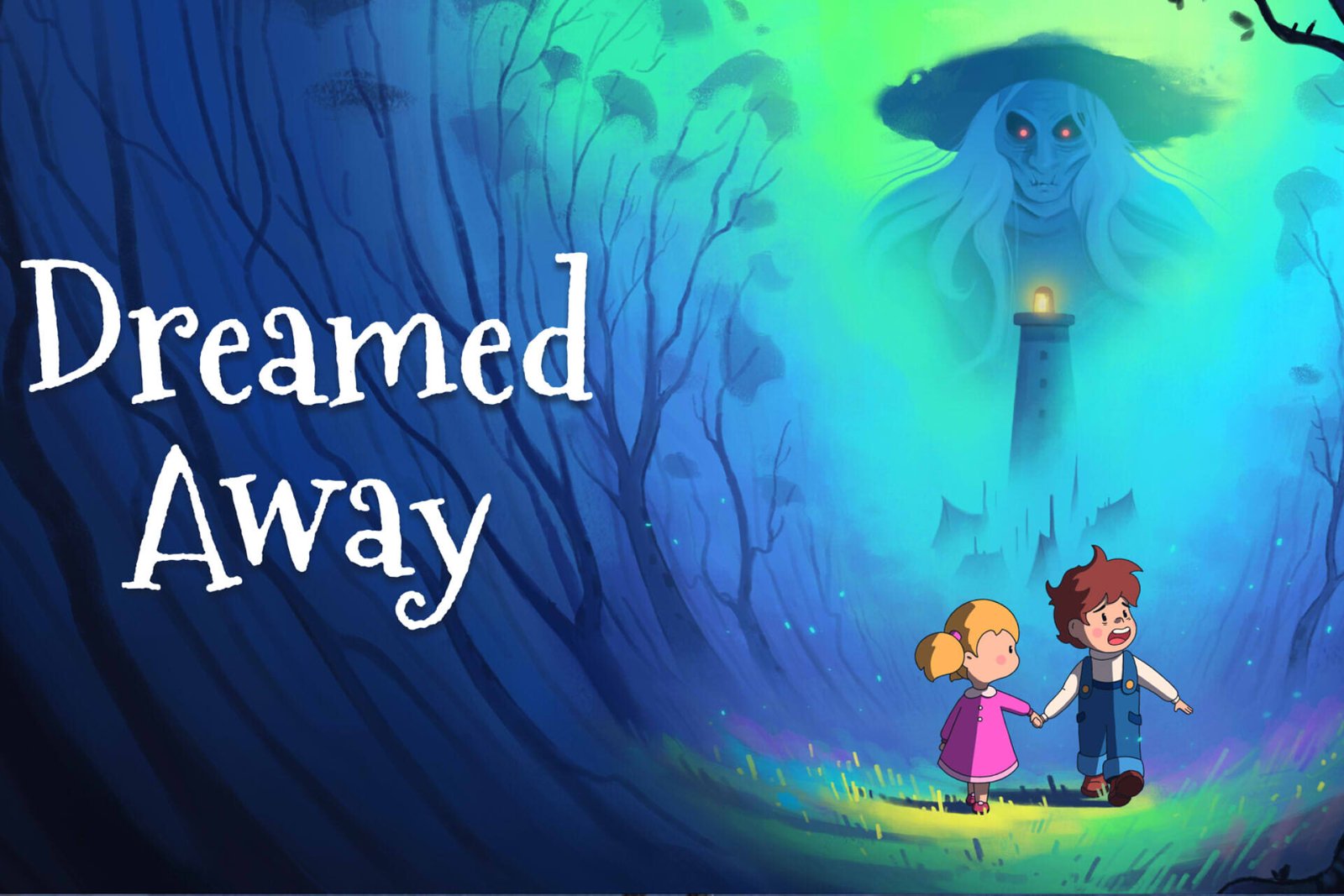Sleep is a funny thing, isn’t it? The way we slip between reality and unconsciousness, drifting off into hazy dream states. Dreamed Away explores this with a gorgeous, charming, and quietly unnerving RPG that walks the line between awake and asleep, reality and illusion, comfort and dread.
From the moment you first launch Dreamed Away, the game establishes an atmosphere that is both comfy and curious. The title screen alone features a charming artwork and mysterious, ambient melody that sets the stage for the mysterious tale to come. What follows once you hit that ‘play’ button? Let’s dive in and take a look.
Charming Pixel Art Builds A Nostalgic Dream-Like Feeling From the Very Beginning
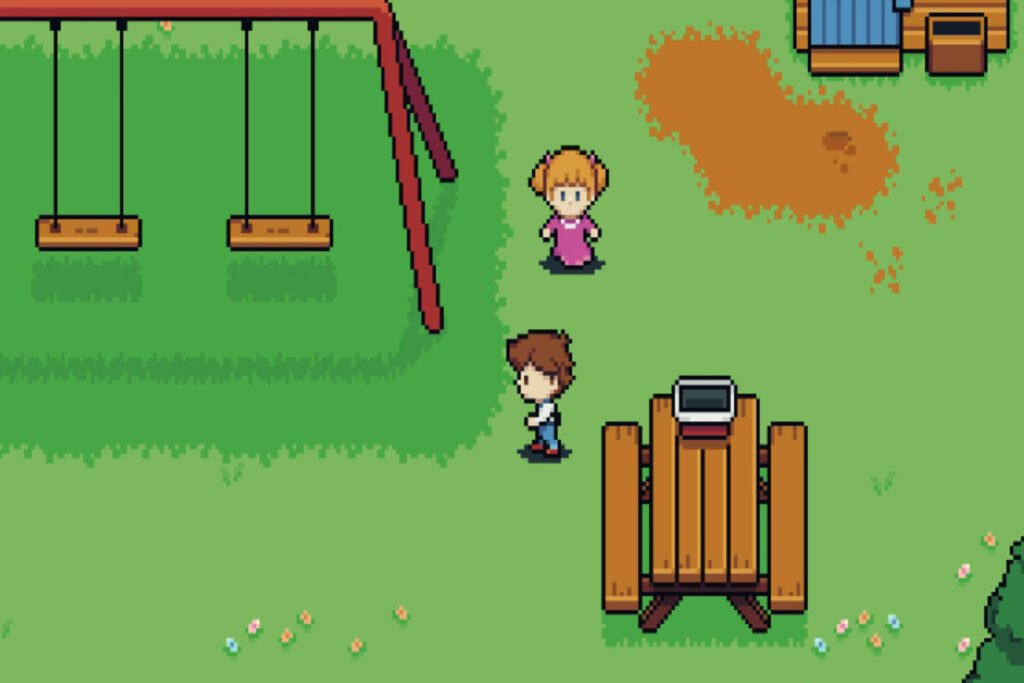
The first thing you’ll notice about Dreamed Away is the gorgeous pixel art, bringing a lovely hand-crafted style to the world you explore. There’s something fondly nostalgic about this stylization, akin to that of older Game Boy and Nintendo DS games. However, it’s also modernized beautifully with crystal clear pixels, bright and bold colors, and charming little animations.
The dynamic lighting is utilized beautifully to create little spotlight/torch effects, perfectly setting up that slightly eerie, unknown vibe that clashes against the softer, heartwarming moments. So often, the charming little sprites and warm, brightly illuminated landscapes will give way to something darker, disruptive, and unsettling. The recurring motif of the red eyes is particularly jarring, a simple yet striking warning sign of dangers to come.
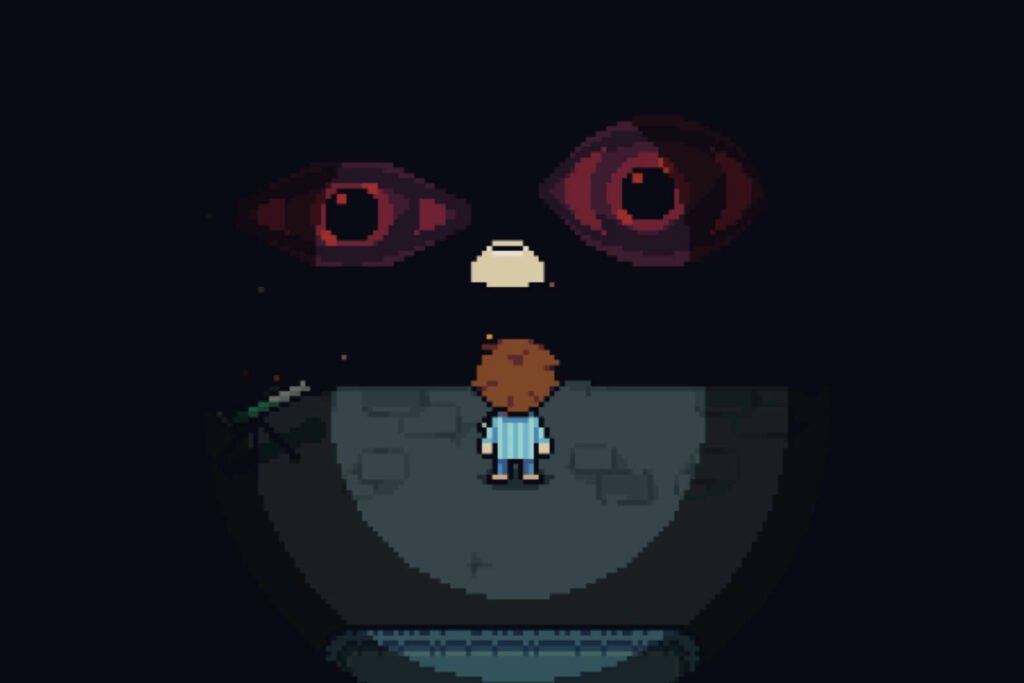
On top of this, there are collectibles – drawings from Theo’s younger sister, Louise. What makes these drawings such a fond feature for me, though, is that they have been designed to look like real childlike drawings. These are seriously impressive and look like something out of a creepy horror ARG, in the best way possible. It was like looking through a haunted child’s hand-crafted art book, and I simply couldn’t look away.
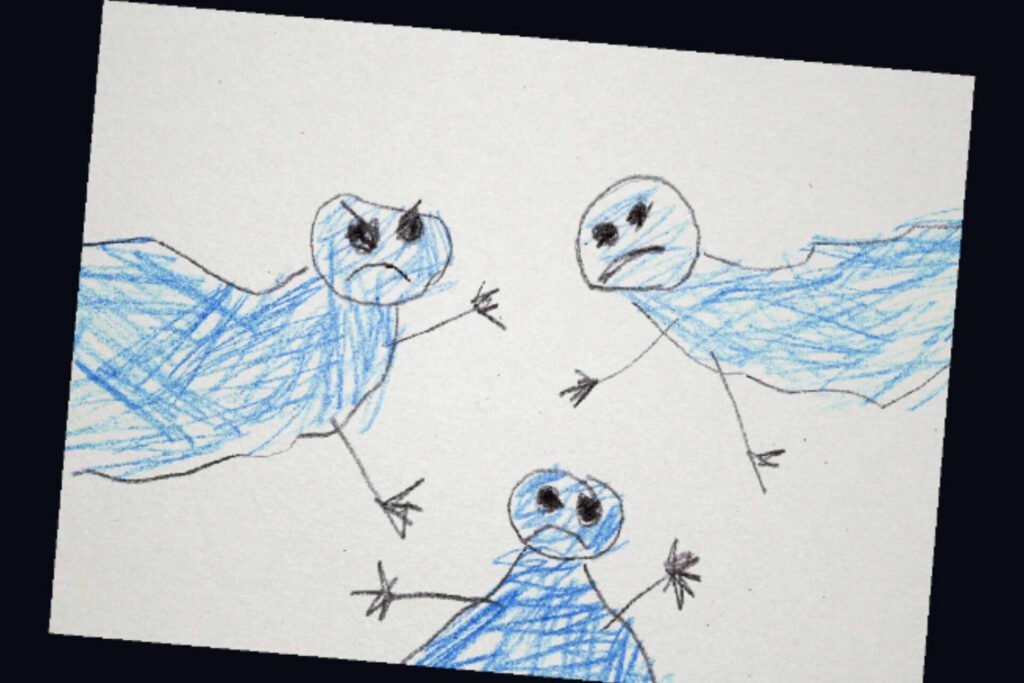
Charming Retro Blips & Spooky Sound Effects Set the Scene
Audio design is a key part of Dreamed Away’s success in setting such a charming, lively little scene, and then dropping you into something darker, eerier, and much more curious. From the text sound effects to the battle music, everything is delightfully nostalgic, reminiscent of the 8-bit and 16-bit track magic found back in the GBC and GBA era.
Every musical track or sound effect is subtle and enjoyable, yet impactful. There’s nothing too overbearing, just the right level to really build atmosphere as you take each step forward into the unknown. And honestly? It’s one of the things I’ve loved most about Dreamed Away, because walking that fine line between finding fitting sounds for pixel art and not having them be too much on the ears can be tricky.
A Story That Takes You….Somewhere Else
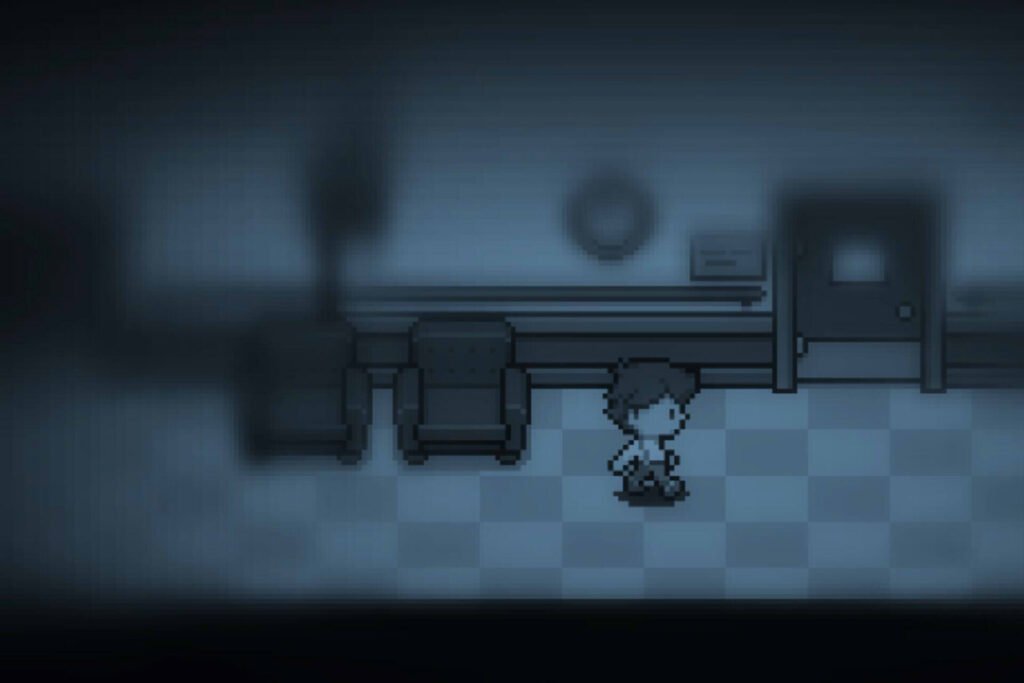
Honestly? The story in Dreamed Away is nothing too complex. In fact, the narrative at times isn’t always clear – but this is no negative aspect.
You play as Theo, a young boy searching for his missing sister, Louise. Theo is thrown into a place that feels built out of imagination, dancing between dream-like states and wakefulness as he follows strange leads. In short, it all revolves around sleep. But when is Theo sleeping, and when is he facing reality? When will he wake up? How has he slipped into some other universe through the travel method of sleep? These are all questions you will find yourself pondering along the way.
However, rather than confusing, this ambiguity works in favor of Dreamed Away. Heck, dare I say it’s addictive, even. There are so many times when I momentarily felt lost, stumbling in the dark across strange maps with limited vision as I solve puzzles to push forward, discovering strange, quirky new companions and places, and chasing a mystery you don’t quite understand.
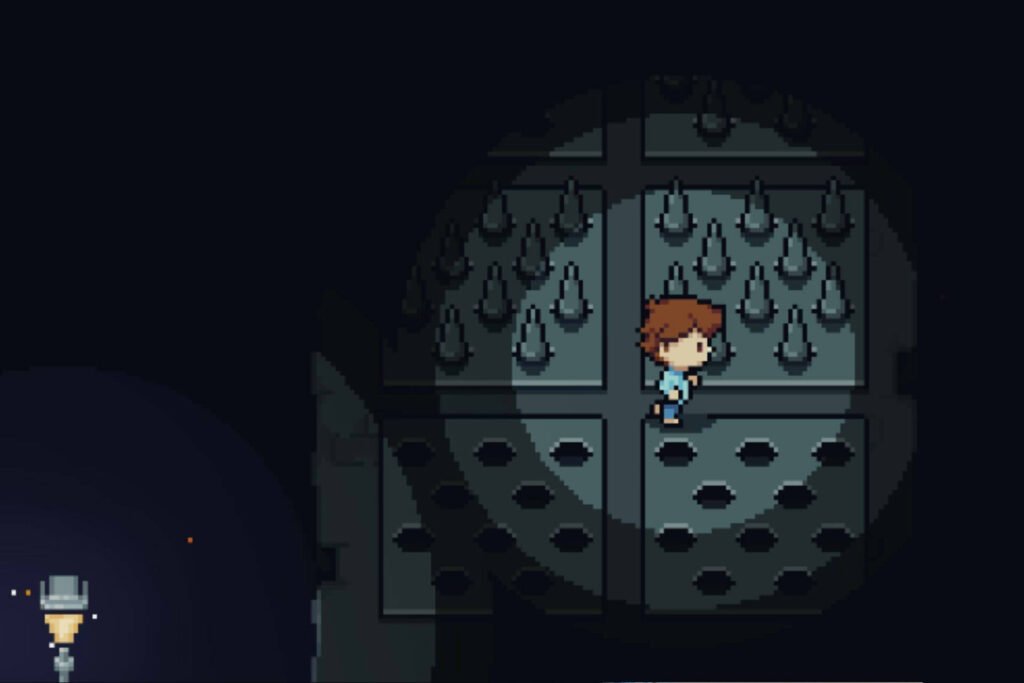
It creates that feeling of being half lucid, wandering through a strange dream rather well, and the cycle of waking and sleeping with Theo’s realities twisting and bleeding into one another is nothing short of fascinating. Sometimes, it really is as simple as “your little sister goes missing, something dark is lurking, and it all ties back to sleep” that makes for the most memorable experiences, and well, Dreamed Away is proof of this.
At the Heart of Dreamed Away Shines the Love of Two Siblings
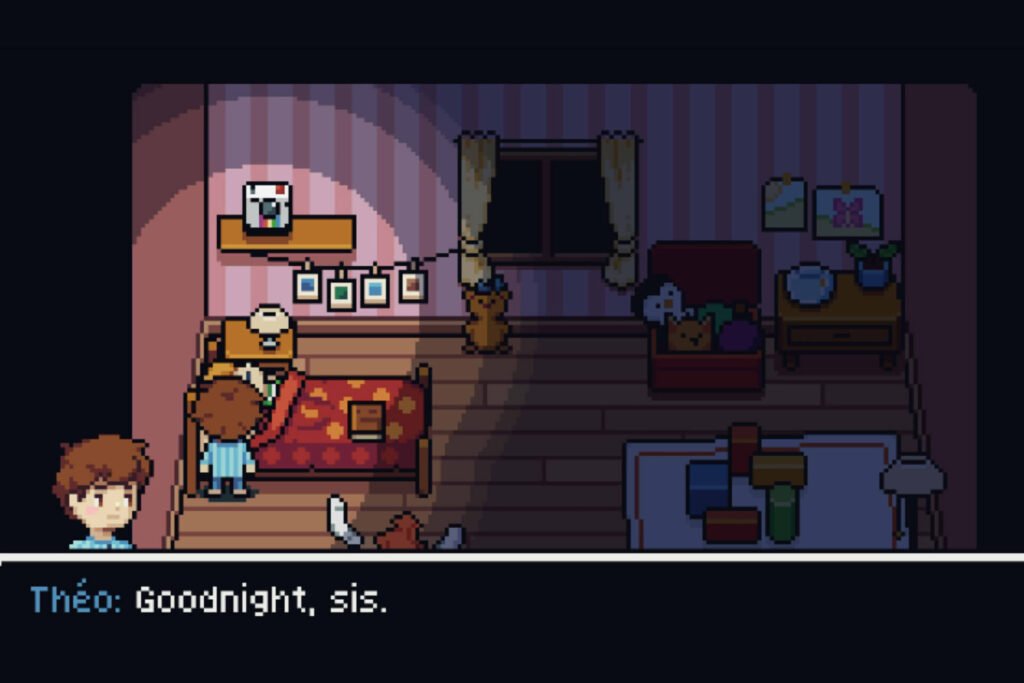
I’ve played plenty of games where two siblings are at the forefront of the story. Many of them have been pixel titles like Dreamed Away, but not many of them have been all that successful in the way they have built these characters. Dreamed Away, on the other hand? I cannot sing my praises enough for how the two siblings have been written.
Look. Younger siblings can be annoying; we all get it. However, unlike other games, where siblings have spent most of their time arguing and declaring their hate for one another to the point where it dulled my entire experience, Dreamed Away hits that perfect balance.
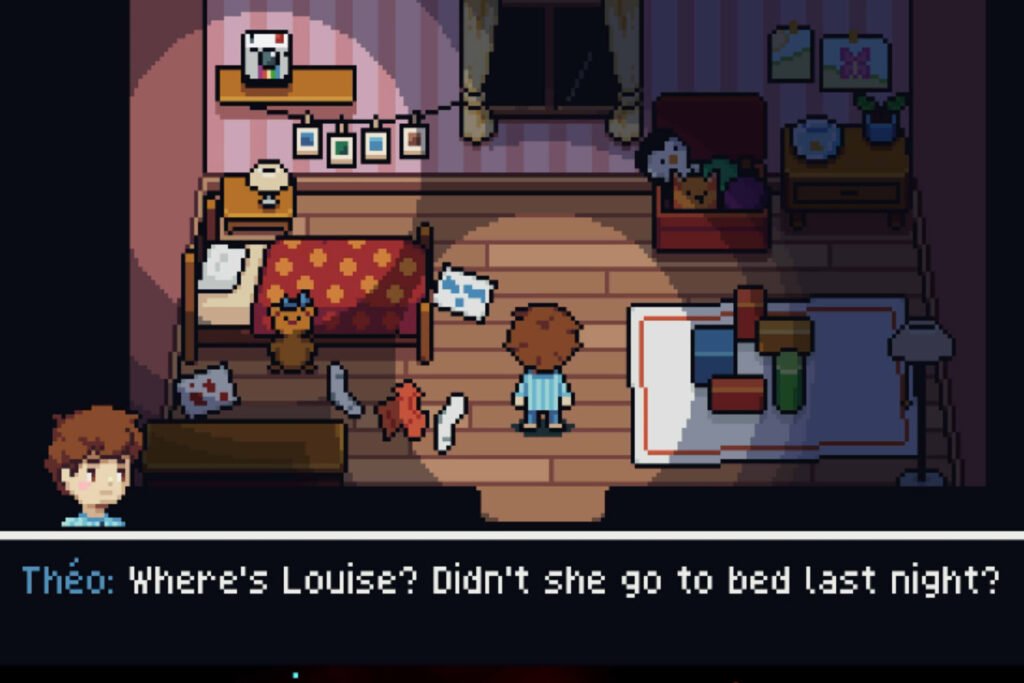
Theo gets annoyed/frustrated by Louise on more than one occasion, but not once does it hinder the clear love and care he has for her. Truly, he is the big brother of all big brothers. Not only does he tolerate her fun and games or tuck her back into bed to read her a story when she wakes him up, but Theo quite literally enters an alternate world and goes up against all sorts of terrifying odds in chase of her; his love for his little sister knows no bounds.
Gameplay That Keeps Me Eager For the Next Chapter
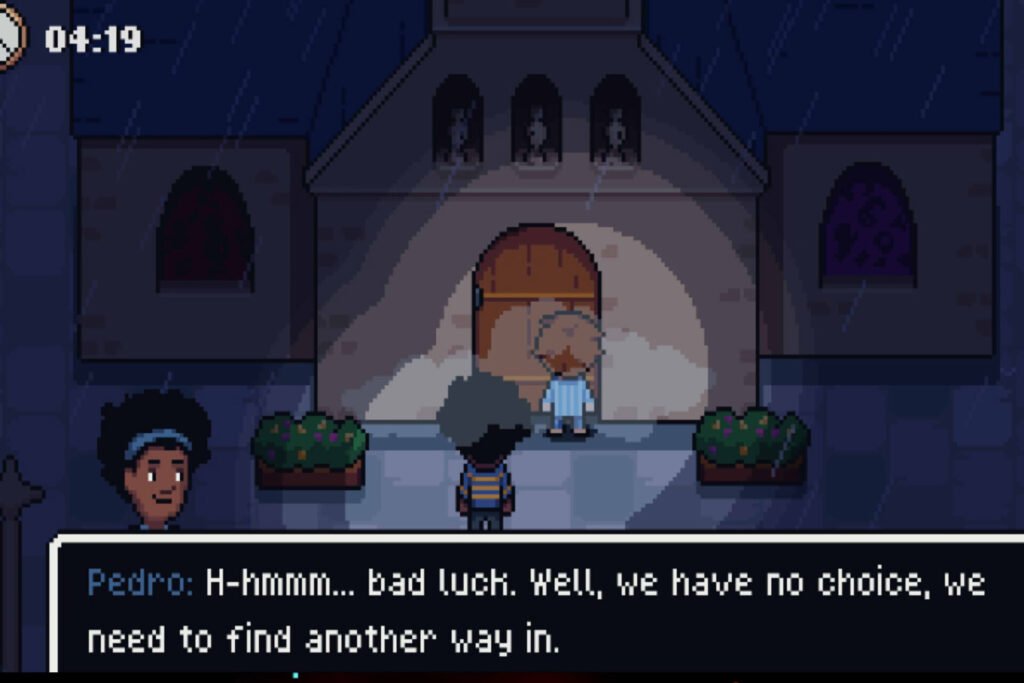
When it comes to gameplay, Dreamed Away is simple yet satisfying. Exploration feels ever-so curious and calming, even when things take an eerie turn, thus creating a unique sense of suspense.
Combat is an absolute joy, with a system that is highly engaging and addictive – drawing comparisons to that of Undertale and Earthbound. You’ll face a turn-based system with choices such as attack, item use, or run, and you will need to time button inputs to both nail attacks upon and dodge from the enemy.
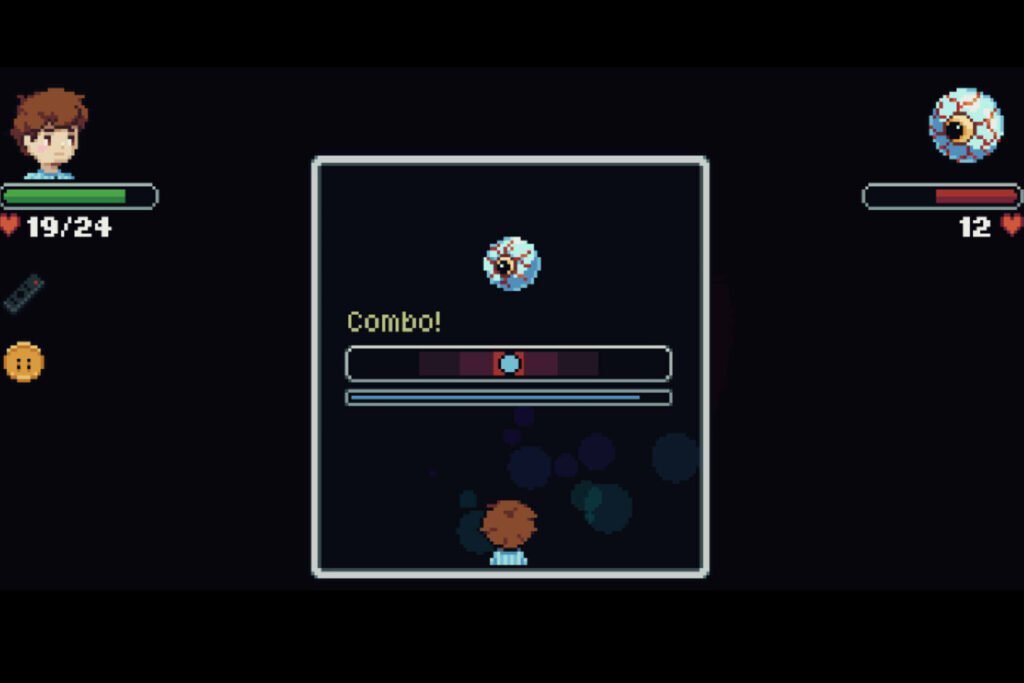
There’s a lot of energy and tension to every encounter based on this, and simply learning the attack patterns for each encounter creates a fun challenge. The battles themselves are just the right level of challenging, whilst still feeling fair. Rather than making me feel inferior and taking a break if I slipped up and lost three times in a row, I found myself on the edge of my seat, going “one more try, I have it this time”, an addictive loop setting in.
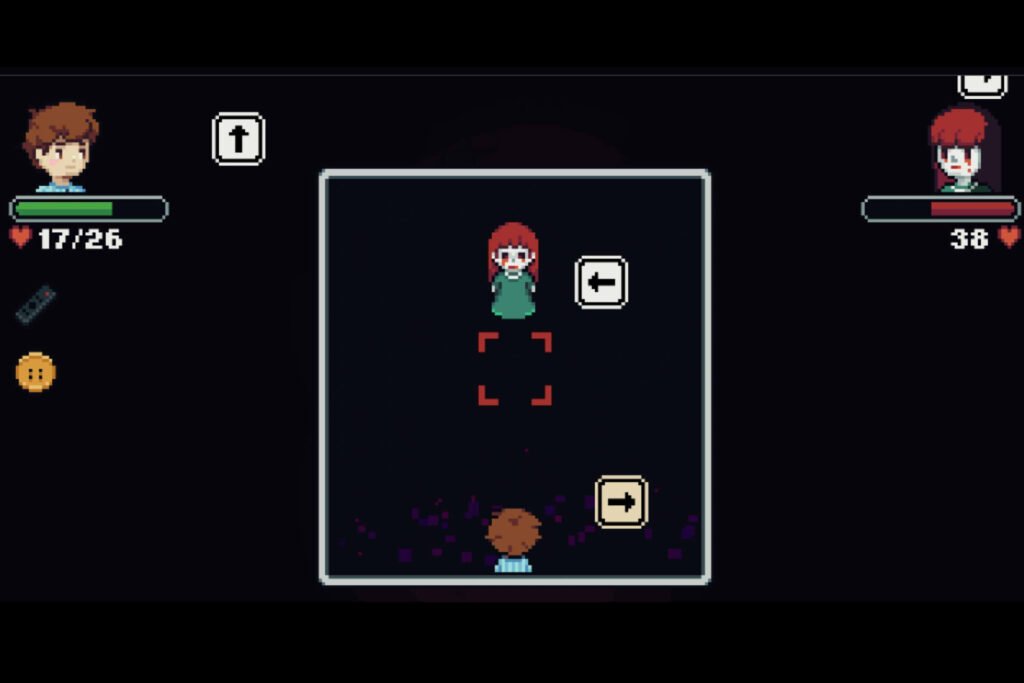
Outside of combat, there’s a charm in the various puzzles. Some are more nostalgic and simple in structure, such as triggering mechanisms, or pushing boulders around to unlock new pathways (similar to that of old Pokemon games), while others pose a time trial on your objective, creating a slight sense of urgency in these key moments. There’s enough time to take in your surroundings, explore every inch of the map, and chatter with some very vibrant personalities, providing a moment of calming light between each cloud of darkness to come.
The only negative worth bringing up is that when it comes to gameplay, sometimes the openness and mysterious lack of clarity is taken to an extent that may cause player confusion. One prime example is when you have the opportunity to enter the ‘Red Room’ in Chapter 2. Upon entering, you find yourself wandering the strange red galaxy-like plane. However, it will seem that no matter which way you walk, you won’t find an end.
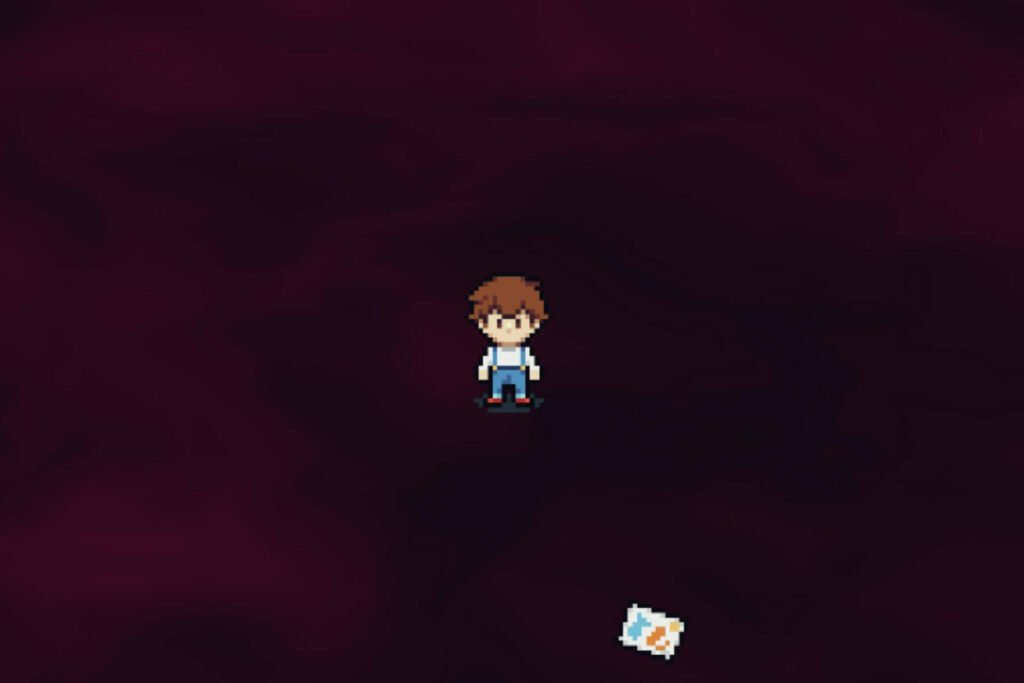
There actually is a door located on this map, but the lack of any floor tiles, objectives, or even visual hints that you are going in the right direction may cause players to think that they are stuck or glitched out. I’m not afraid to admit that even I was second-guessing myself for a minute here, wondering if I had made the “wrong” choice and become stuck in an endless loop.
Even adding something as simple as a flash of those menacing red eyes each time you get a little bit closer to the exit would do enough to point players in the right direction without stripping that endless, liminal feeling that the scene was supposed to convey.
Additionally, you’ll need to come prepared knowing that you can only save at designated areas, anywhere with a Theo Book. Though, I suppose this pays homage to those older retro games, so I can’t complain about this too much. Other than these minor points, I’m really struggling to find many faults, and I’ve been absolutely hooked on the game because of it.
Final Thoughts
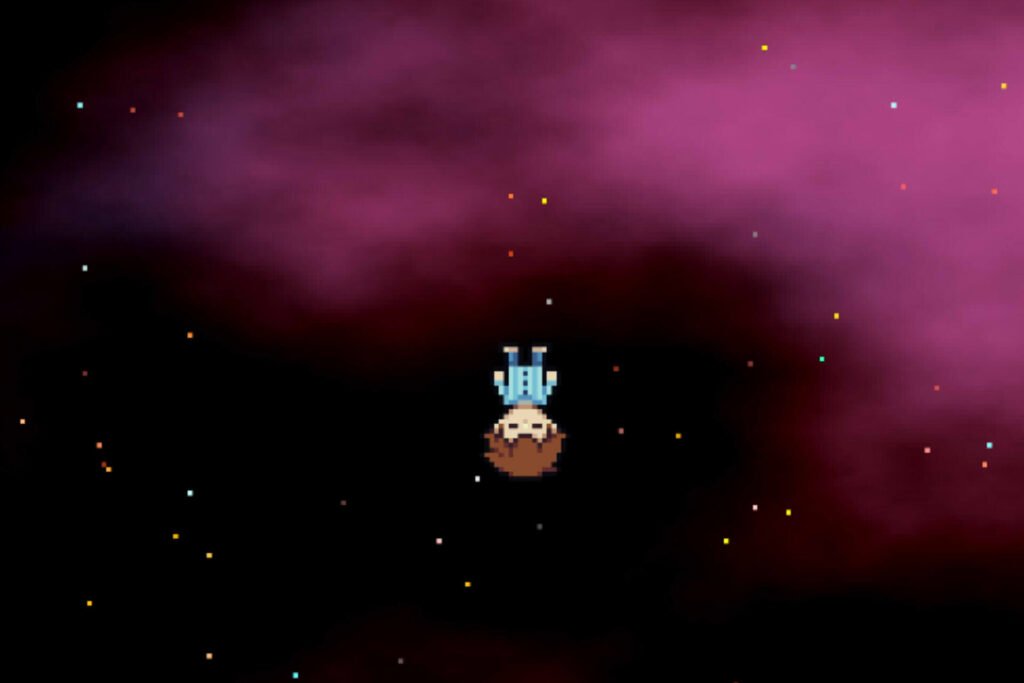
After what I’ve experienced thus far with Dreamed Away, I can wholeheartedly say that it’s a brilliant experience. The game doesn’t try to do too much, and because of that, it does a lot of things exceptionally well.
Gameplay continues to pull you back in with quiet exploration, strange discoveries, strange and eccentric (almost dream-like) NPCs, moments of chaos and darkness, and then calmness once again. Each chapter feels like the waves of a dream, constantly shifting without warning. Even when I try to step away from it, I keep finding myself crawling back, wanting to push a little farther, see where Theo’s path leads next, and uncover just a little more about the strange situation you’ve found yourself in.
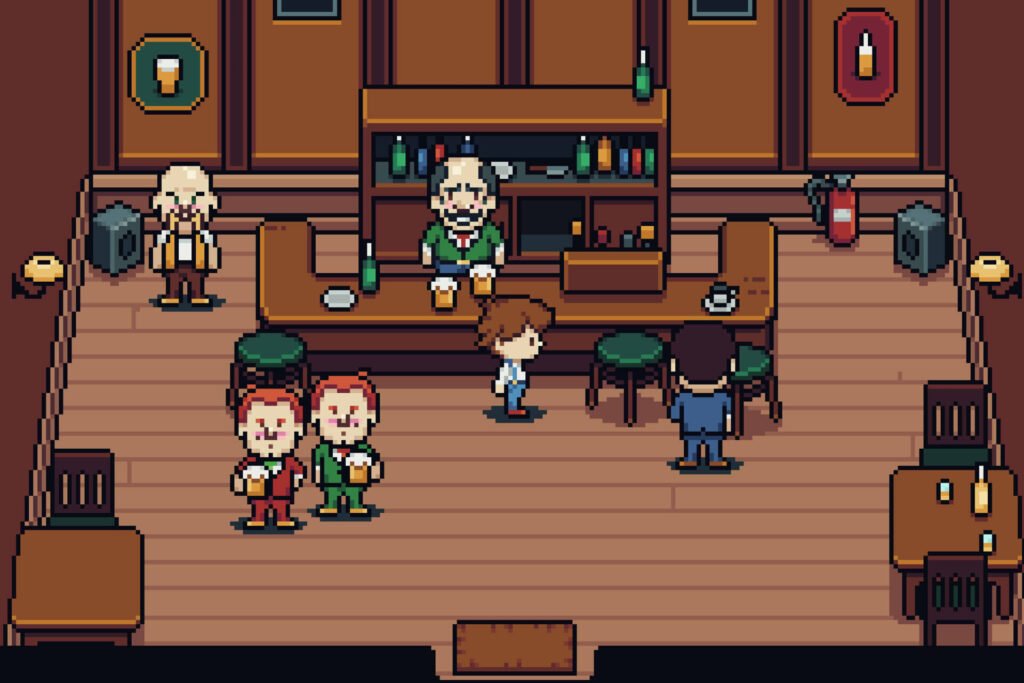
Dreamed Away is one of those games that feels deeply personal, curious, and charming. It perfectly captures that feeling of being lost in a dream, foggy-headed, and somewhat enchanted, yet a little bit afraid. There’s quite a charm to be found in this balance: cozy, yet unsettling. Simple, yet layered. Nostalgic, yet fresh. It’s a game that feels incredibly human, and the care that has gone into creation can be found in every corner, from the dynamic lighting to the creative attack patterns assigned to each enemy you’ll face in battle.
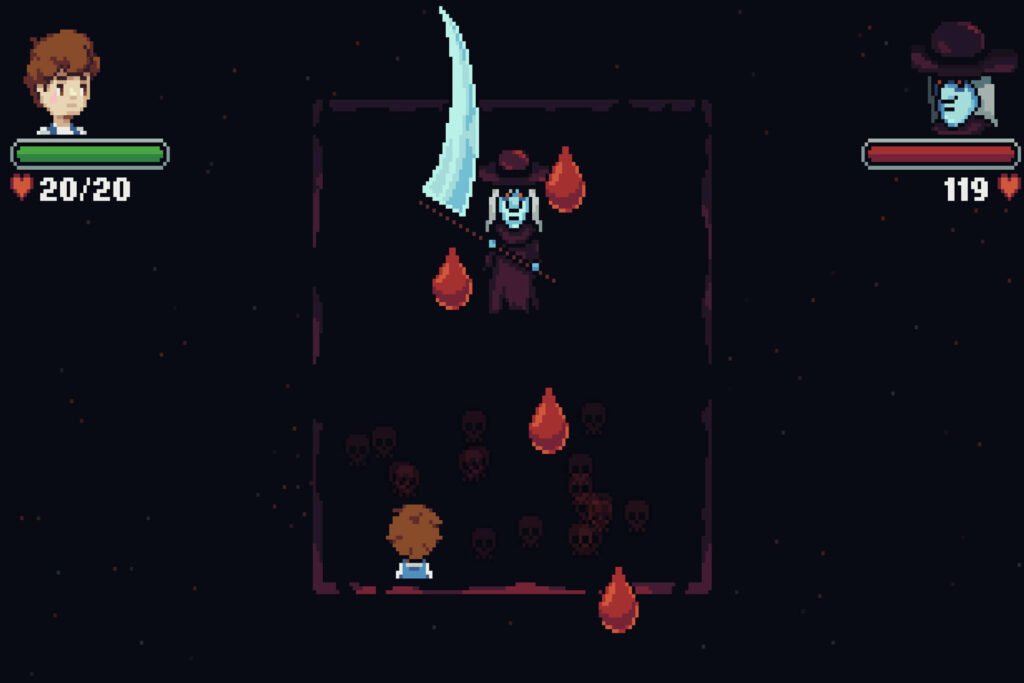
If you’re looking for a game that embraces the clash of comforting yet creepy, whimsical yet eerie, then Dreamed Away is a standout pick. It’s the perfect type of game you’d want to curl up with on a rainy day or enjoy in celebration of the spooky season.
Dreamed Away doesn’t just explore what happens when we fall asleep; it invites us to travel to this space between consciousness and dreams. I, for one, could not have enjoyed the journey so far more, and I look forward to continuing the game in my downtime to discover how this twisted, adorable tale concludes.
Dreamed Away: Dreamed Away doesn't try to do too much, and because of that, it does a lot of things exceptionally well. It's a game that feels deeply personal, curious, and charming. It perfectly captures that feeling of being lost in a dream, foggy-headed, and somewhat enchanted, yet a little bit afraid. There's quite a charm to be found in this balance: cozy, yet unsettling. Simple, yet layered. Nostalgic, yet fresh. Dreamed Away feels incredibly human, and the care that has gone into creation can be found in every corner, from the dynamic lighting to the creative attack patterns assigned to each enemy you'll face in battle. – Grace Black
